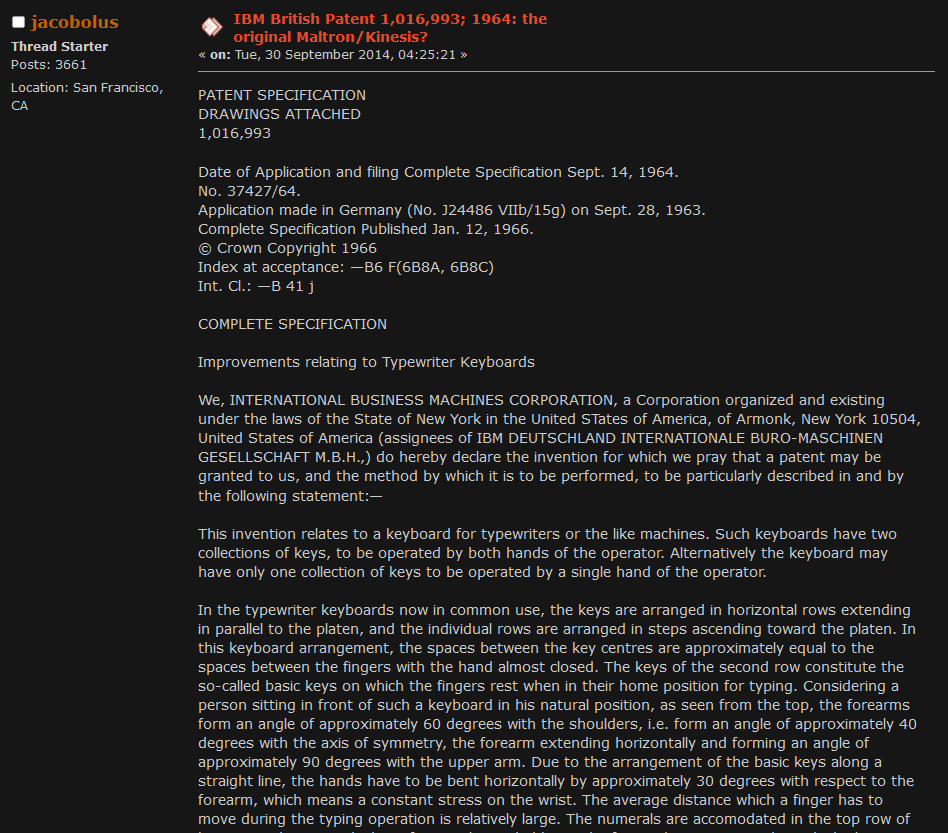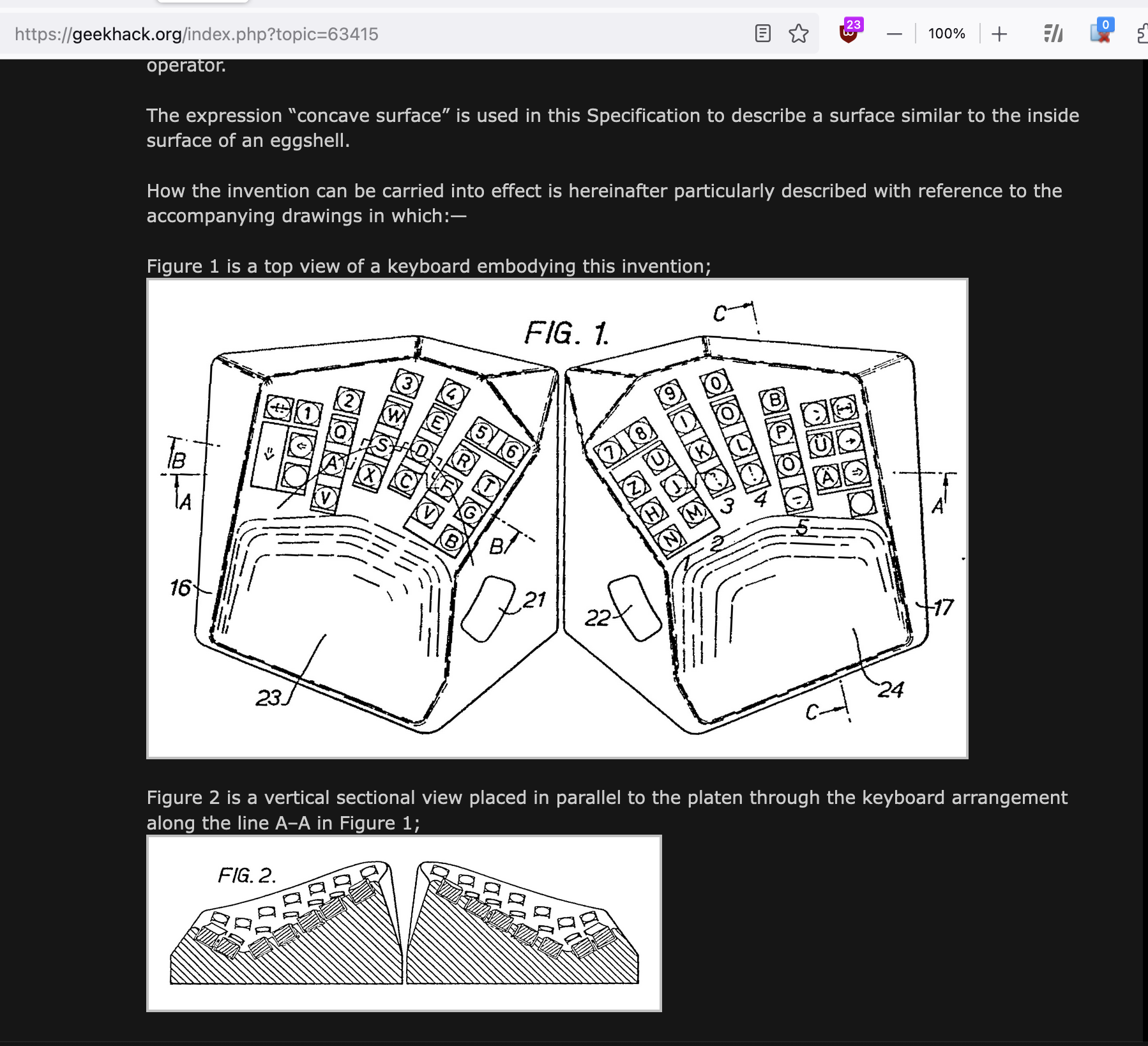IBM Ergonomic Keyboard Patent 1963
IBM Ergonomic Keyboard Patent
IBM British Patent 1016993; 1964: the original Maltron/Kinesis?


- ibm ergonomic keyboard patent F5fTD
- https://geekhack.org/index.php?topic=63415.0
- PATENT SPECIFICATION
- DRAWINGS ATTACHED
- 1,016,993
- Date of Application and filing Complete Specification Sept. 14, 1964.
- No. 37427/64.
- Application made in Germany (No. J24486 VIIb/15g) on Sept. 28, 1963.
- Complete Specification Published Jan. 12, 1966.
- © Crown Copyright 1966
- Index at acceptance: —B6 F(6B8A, 6B8C)
- Int. Cl.: —B 41 j
- COMPLETE SPECIFICATION
- Improvements relating to Typewriter Keyboards
- We, INTERNATIONAL BUSINESS MACHINES CORPORATION, a Corporation organized and existing under the laws of the State of New York in the United STates of America, of Armonk, New York 10504, United States of America (assignees of IBM DEUTSCHLAND INTERNATIONALE BURO-MASCHINEN GESELLSCHAFT M.B.H.,) do hereby declare the invention for which we pray that a patent may be granted to us, and the method by which it is to be performed, to be particularly described in and by the following statement:—
- This invention relates to a keyboard for typewriters or the like machines. Such keyboards have two collections of keys, to be operated by both hands of the operator. Alternatively the keyboard may have only one collection of keys to be operated by a single hand of the operator.
- In the typewriter keyboards now in common use, the keys are arranged in horizontal rows extending in parallel to the platen, and the individual rows are arranged in steps ascending toward the platen. In this keyboard arrangement, the spaces between the key centres are approximately equal to the spaces between the fingers with the hand almost closed. The keys of the second row constitute the so-called basic keys on which the fingers rest when in their home position for typing. Considering a person sitting in front of such a keyboard in his natural position, as seen from the top, the forearms form an angle of approximately 60 degrees with the shoulders, i.e. form an angle of approximately 40 degrees with the axis of symmetry, the forearm extending horizontally and forming an angle of approximately 90 degrees with the upper arm. Due to the arrangement of the basic keys along a straight line, the hands have to be bent horizontally by approximately 30 degrees with respect to the forearm, which means a constant stress on the wrist. The average distance which a finger has to move during the typing operation is relatively large. The numerals are accomodated in the top row of keys. In order to reach these frequently needed keys, the fingers have to move through the longest distance, and the operator frequently interrupts his typing system and rhythm in order to operate these keys. Moreover, primarily because the keys are arranged approximately in a plane, both the fingers and the entire arm have to be moved in order to place the respective finger depressing a key always into a position vertically above such a key. Otherwise the keys of the lower rows are depressed by the fingernails and the keys of the upper rows by the lower parts of the fingertips, that is, only part of the finger force being employed acts in the direction of the key movement, while the other part acting perpendicularly thereto merely increases the friction of the key guide. A close observation of the individual finger movements when using such a key arrangement of the described type finally shows that, due to the longer distances through which tey have to move, the thumb, the little finger and the index finger are strained substantially more than the middle and ring fingers.
- It is an object of the present invention to provide a keyboard for typewriters or like machines in which the above disadvantages are mitigated.
- According to the invention a keyboard for typewriters or like machines comprises at least one collection of keys, the contact faces of which are arranged so as to present a concave surface for the fingertips of the operator.
- The expression “concave surface” is used in this Specification to describe a surface similar to the inside surface of an eggshell.
- How the invention can be carried into effect is hereinafter particularly described with reference to the accompanying drawings in which:—
- Figure 1 is a top view of a keyboard embodying this invention;
...